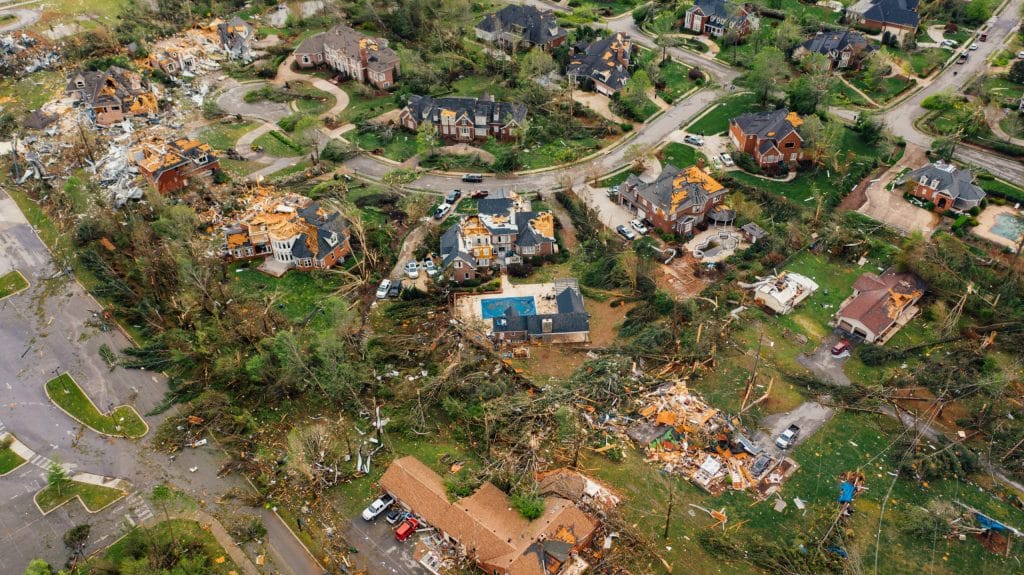- 🌪️ Hurricane Helene has caused massive destruction, displacing residents and leaving many without power.
- 🌊 Climate change is intensifying hurricanes, with a substantial increase in major storms and financial damage.
- 🔥 Aside from hurricanes, wildfires and extreme heat also pose significant threats across specific U.S. regions.
- 🏘️ Some states have been identified with lower risk for natural disasters, making them potentially safer places to live in.
- 📊 Realtor.com provides environmental risk scores to help potential homeowners assess the safety of their desired locations regarding natural disasters.
In recent years, hurricanes have become synonymous with destruction and chaos, as exemplified by the catastrophic Hurricane Helene. As residents continue to recover from displacement and power outages, it’s imperative to delve deeper into the causes and consequences of such extreme weather events. Climate change has significantly altered the intensity and frequency of hurricanes, further complicating the landscape of natural disasters. In this blog post, we will explore the role of climate change in hurricane formation, analyze data on lower-risk living options, and offer insights on using environmental risk scores for safer housing decisions.
The Growing Fury of Hurricanes in the Climate Change Era
Hurricanes are more than just tempests of wind and water. They are increasingly becoming fierce bearers of destruction, and climate change is at the heart of this transformation. Let’s break down how:
The Role of Climate Change in Intensifying Hurricanes
- Warmer Ocean Temperatures
- With rising global temperatures, ocean waters have warmed, providing storms with more energy, thus leading to stronger and more intense hurricanes.
- Increased Precipitation
- Warmer air holds more moisture, which results in hurricanes releasing more rainfall, leading to higher risks of flooding.
- Rising Sea Levels
- Elevated sea levels due to melting ice caps mean that storm surges become more dangerous, amplifying flood risks in coastal areas.
Economic and Social Impact
- Financial Damage
- The financial burden of hurricane damage has ballooned, costing billions in infrastructure repair and impacting economic activity.
- Displacement and Health Risks
- Major storms are displacing populations, creating human crises, and elevating health risks due to lack of access to essential resources.
The Double Threat: Wildfires and Extreme Heat
While hurricanes gather the limelight, other natural disasters like wildfires and extreme heat waves are also becoming more prevalent.
- Wildfires fueled by dry conditions and strong winds ravage communities, particularly in the western U.S.
- Extreme Heat, which can damage property infrastructure and pose severe health risks, is spreading beyond traditional hotspots like the South to other regions.
Finding Safe Havens: States with Lower Risk of Natural Disasters
Despite the increasing threat of natural calamities, some states stand out as safer options for those looking to relocate:
- Factors for Consideration
- Geographic location
- Historical data on natural disasters
- Environmental policies
- Top Low-Risk States
- States that have consistently reported lower incidents of hurricanes and have proactive climate adaptation measures fare better as safe havens.
Leveraging Environmental Risk Scores for Smarter Housing Choices
Realtor.com offers a valuable resource for prospective homeowners with their comprehensive environmental risk scores. Here’s how you can benefit:
Understanding the Risk Score System
- Components of the Score
- The risk scores evaluate potential threats from hurricanes, floods, wildfires, and more, providing a holistic view of possible environmental risks.
- Decision-Making Tool
- By understanding the risk scores, buyers can make informed decisions about where to invest, ensuring the safety and longevity of their property.
Advantages of Using Environmental Risk Scores
- Facilitates informed decision-making
- Highlights potential vulnerabilities in desired areas
- Encourages investment in safer regions
Conclusion
As the world grapples with the mounting challenges posed by climate change, understanding the intricacies of safe living is crucial. Hurricanes, wildfires, and extreme heat are no longer sporadic events but inescapable realities demanding informed choices. By identifying safer states and utilizing resources like environmental risk scores, homeowners can better protect themselves and their investments against future uncertainties.






